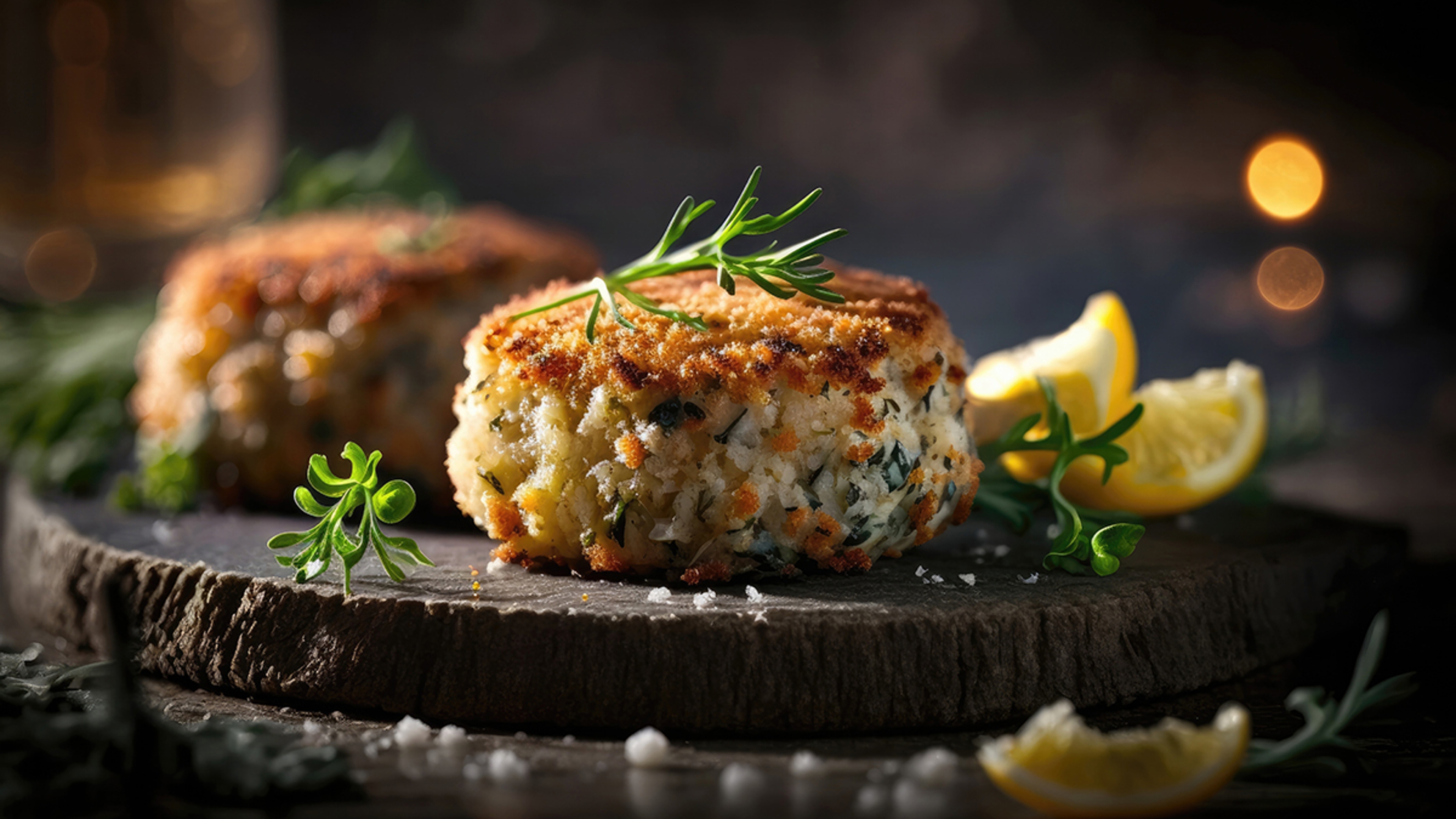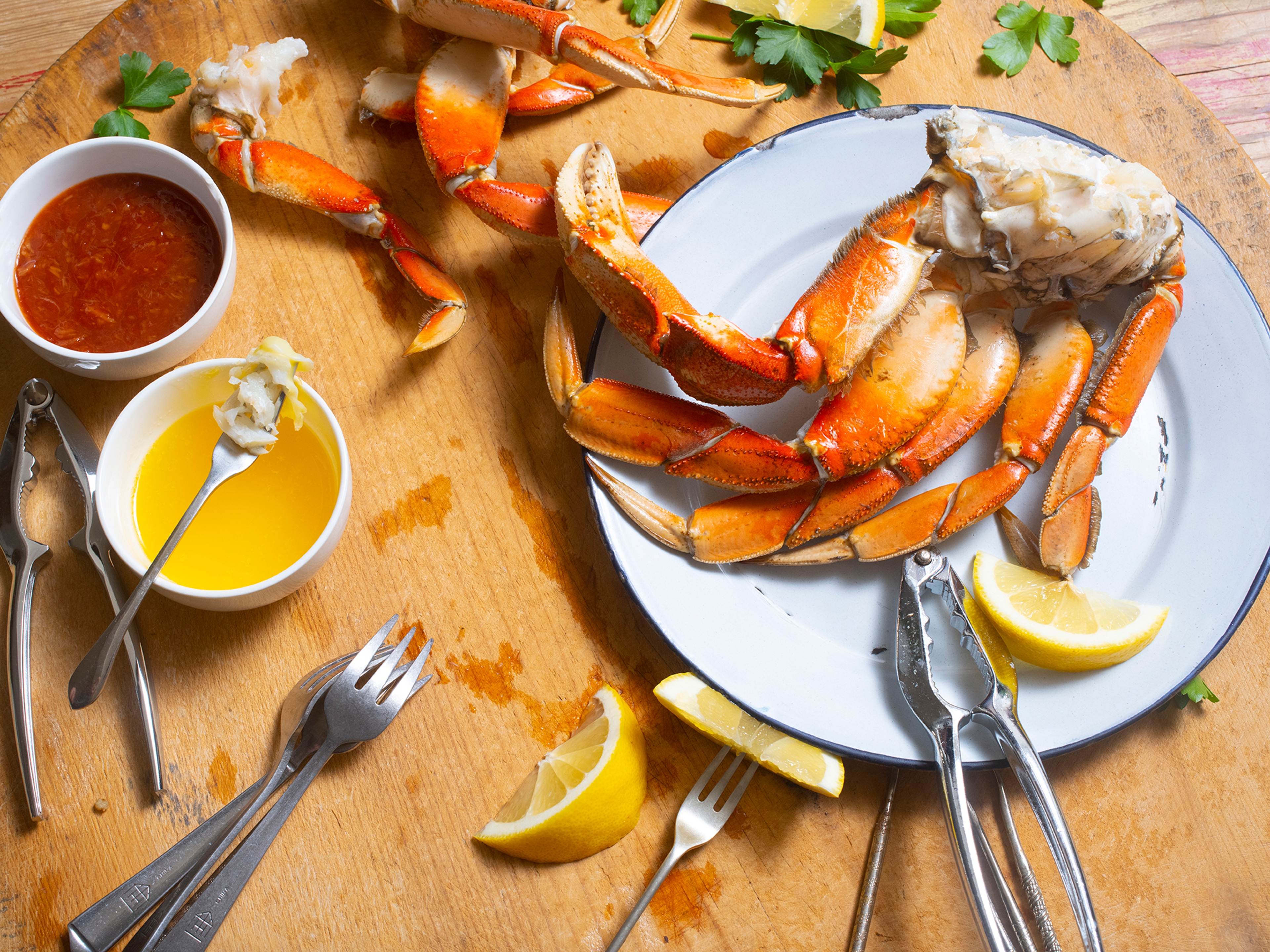These Types of Crabs Offer the Most Remarkable Flavors From the Deep
Crabs thrive throughout both the Pacific and Atlantic oceans, so there's no shortage of where you can find them.
Nov 11, 2024
Crabs are one of nature's greatest wonders. With more than 4,500 species of the creature in existence, you can find everything from little, tiny crabs that are barely visible to the naked eye to 12-foot monsters like the Japanese spider crab, which stalk deep on the ocean floor and can live for more than a century.
But crabs aren't just beloved for their uniqueness or their weird and fascinating habits. They're also an incredibly delectable food source that can be cooked and served in an almost infinite variety of ways, from crab bisque to crab rangoon to crab linguine and crab risotto, and everything in between. They're irresistible as part of a hearty and classic comfort food but also really shine when eaten on their own — broiled, steamed, or grilled with a simple sauce or dip, a great wine, and a table of friends or family.
What could be more delicious? More crab, I guess.
Our favorite types of crab
King crab
A true “king" of the North Pacific Ocean — the body of water between Alaska and Russia — king crabs weigh between 10 and 25 pounds and sport massive legs that can span more than 5 feet in width, making them one of the largest crab species to ever exist. With their huge, spiky, fan-shaped abdomen, these crabs aren't swimmers but instead are found in shallow coastal waters or walking near the ocean shoreline of the Bering Sea.
King crab harvest typically takes place between October and January, when waters are at their coldest and the crabs are most active. (They thrive in frigid temperatures and dislike warmer water.) Because of strict quotas and regulations designed to prevent overfishing, only males are caught and sold; females are left to raise future generations.

The perfect meal: Despite that large body, most of the eatable meat in a king crab is located in the creature's legs. The delicate, sweet flesh (which many compare to lobster) usually comes pre-cooked and just needs to be reheated. It can be steamed, baked, boiled, or grilled with wonderful results. Once it's ready, simply pull decadent chunks of the tender, pale white meat from the crab's deep red, vibrant shell and dunk them in melted butter with a squeeze of fresh lemon for an insanely delicious bite.
Snow crab
Like the king crab, snow crabs hail from the cold waters of the North Pacific, in addition to the North Atlantic. The crabs are much smaller in size, however, just 2 to 4 pounds and 6 to 7 inches in width, including the legs.
Also sometimes referred to as “queen crab" or “Tanner crab," the spider-like creatures are most abundant between October and May. They taste similar to king crab — light, sweet, and slightly briny — but have a much softer shell that can be cracked by hand, meaning you won't need special tools to access that succulent meat trapped within their legs and claws.

Prepare (and eat) like a pro: Snow crab meat is typically sold cooked and frozen, as both legs and claws. Gentle steaming is the most popular method for warming it — just be careful, as this crab in particular is easy to overcook.
To easily pop leg meat that is still in the shell free, remove the tip of the leg and the knuckle on the opposite end and then, holding the crab leg like a pencil, hit the bottom of your hand against the top of your other hand. The meat should slide right out!
Dungeness crab
One of the most popular — and abundant — types of crab in the seafood world, the Dungeness crab comes from the West Coast and is found living on the sandy, muddy seafloor anywhere between Alaska's Aleutian Islands and Southern California. The small, scrappy crabs — they have sharp teeth for biting — are oval shaped and can range from yellowish-brown to dark purple.

In season from November through July, a good-quality Dungeness crab weighs 2 to 4 pounds and spans 6 to 7 inches in width. The most popular eatable portions of the crab are the legs and claws, although you can also crack the shell and use tools to remove the meat inside. (The shell can even be used to make a flavorful seafood stock.) Dungeness crab can be boiled, steamed, or grilled — you'll know it's done when the shell turns a brilliant reddish orange. Or just buy the meat pre-shucked or already shaped into crab cakes and save yourself the hassle.
Fun fact: First discovered in the Dungeness region of England (the U.K.'s only official desert), the crab gets its name from that habitat. Today, however, many of the creatures also frequent the Dungeness Spit, a fertile stretch of sandy land in northwest Washington State, about two hours northwest of Seattle.
Blue crab
A native to the Atlantic and Gulf coasts, from Nova Scotia all the way down to the Gulf of Mexico, blue crabs are an East Coast staple. They show up in everything from backyard BBQs to beachside clambakes, where they are boiled or steamed to delicate, nutty perfection.
Blue crabs are relatively small, weighting less than a pound and measuring just 3 to 6 inches across. But what really sets them apart — aside from their wonderful flavor, especially when seasoned with Old Bay — is their color. Their shells start out a beautiful blueish-green and turn red with white speckles when cooked. Blue crabs are strong swimmers and can also be aggressive, biting when they feel threatened.

Make your own killer crab cakes: To whip up an amazing no-filler crab cake, combine 2 pounds of crab meat with one-fourth cup mayo, one egg, 1 cup panko bread crumbs, and 1 to 2 teaspoons each of Worcestershire sauce, Dijon mustard, Old Bay seasoning, and fresh lemon juice. Shape the mixture into patties and broil for approximately 7 to 8 minutes or until crisp and golden brown on top. Serve with hot sauce or your favorite dipping sauce of choice.
Stone crab
If you prefer the taste of shrimp or lobster, then Florida stone crab or Gulf stone crab is the crab for you! Found primarily along Florida's bays, seagrass beds, and oyster reefs, the 3- to 4-inch, half-pound stone crab is considered essentially inedible — except for its mouthwatering claws.
Between the months of October and May — the height of stone crab season — fisherman troll these warm waters looking for the highly prized crabs. Once one is found, they remove one of the crab's claws (leaving the other for defense) and throw it back into the water. And, like magic, thanks to some miraculous regeneration abilities the crab naturally possesses, a new appendage will grow back.

With their dramatic red shell and black tips, stone crab claws often look as impressive during a party or special celebration as they taste. Boil or steam them and then serve cold on ice — like oysters — with fresh lemon and a favorite dipping sauce. And when your guests reach for the biggest and most impressive claws, let them! As any true seafood aficionado will tell you, the smaller the claw, the sweeter the bite.
A natural wonder: Not all crabs can regrow their claws, but for those that can — like the stone crab — the process occurs frequently in nature. The animal might lose a claw in a fight with a rival, or it could even shed a claw on its own as part of its natural growth and molting process. Who knew?!
Peekytoe crab
Also known as a rock or sand crab, the peekytoe crab is a relative newcomer to the seafood world. Fishermen used to consider the half-pound crab a nuisance or pest, since it often robbed their traps. Then, they actually started cooking the creatures and found out just how delicious they were.
Now a staple on many high-end restaurant menus, peekytoe crabs, which inhabit the rocky shorelines of the East Coast, don't ship well after being harvested. Because of this, the crabs are typically steamed soon after being caught. (Their season runs between August and November.) The meat is then picked away from the shell and sold either fresh or canned.

Peekytoe crab is great baked or roasted. Use it in recipes like crab-stuffed mushrooms or crab dip, or paired with fresh herbs and olive oil and spread over toast. It's also incredible when sprinkled over a Caesar or garden salad.
What's in a name: Peekytoe crabs get their name from a combination of East Coast slang and that distinctive Maine accent many fishermen possess. The toes on the crab form a very sharp inward point — they're “picked," as they say in the state — or they have a “picked toe." Visitors and restaurant buyers ordering fresh crab and hearing that description often became confused by what was being said, and over time the “peekytoe" crab got its name.
What exactly is a soft-shell crab?
ne of seafood's greatest delicacies, a “soft-shell" crab is actually just a blue crab that has molted or shed its hard outer shell. Crabs molt as part of their growing process, with smaller crabs discarding their outer layer four or five times a month and larger crabs shedding theirs around once a month during the warm summer period from May to September, when they do the majority of their growing.
Without that shell in place, the crab is incredibly tender and entirely eatable (aside from the lungs, gills, and face). The rich and nutty meat is ideal fried in a batter or sautéed whole and served with melted butter.
Because these crabs can start to harden again as soon as 12 hours after they've lost their shells, expect to pay a bit more for soft-shell crabs than you would regular blue crabs. They're substantially rarer and tricky for fisherman to successfully harvest. But with that incredible taste and satisfying crunch when cooked to perfection, they're worth the price!










